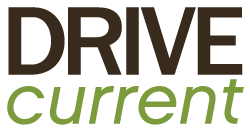NutrientNet
While the Chesapeake Bay sits between Maryland and Virginia, there are in fact 8 states including Pennsylvania, West Virginia and New York with streams that end up in the bay. Most of those streams contain two chemicals that are harmful to the animals and plants that live in the Bay – Phosphates and Nitrates.
For years, the federal government, state governments, and environmental non-profits have been exploring ways to reduce the pollution that flows into the Bay every day. One option is to require “point source” polluters such as factories and wastewater treatment plants to pollute less by deploying new technology and techniques. That is often very costly.
Another approach is to let those point-source polluters purchase credits from “non-point source” polluters such as farms. Farmers can make simple, inexpensive changes to their farming practices to reduce fertilizer and animal manure runoff into local waterways. Fertilizer and manure contain high levels of nitrates and phosphates.
So by way of example, a factory could opt to buy credits and pay farmers $500,000 to avoid spending $2,000,000 in equipment upgrades. The farmers are happy – they receive half a million dollars for relatively little effort and the bay gets cleaner.
In practice this is incredibly complex. Where is the farm? Please draw it on on a map and we’ll analyze the soil type(s) that make up the farm. What crops do you grow? Is some land dedicated to pasture/grazing? How many feet of steam-front are on your property. What type and how many animals do you have? Have you met the minimum required standards/practices to even earn credits?
It is really a hard challenge and the solution will continue to evolve. Drive Current worked with all the stakeholders – multiple state agencies from 8 states, federal agencies, universities providing the models, non-profits coordinating grants and timelines. Drive Current’s role was to act as technology adviser and to build the marketplace.

